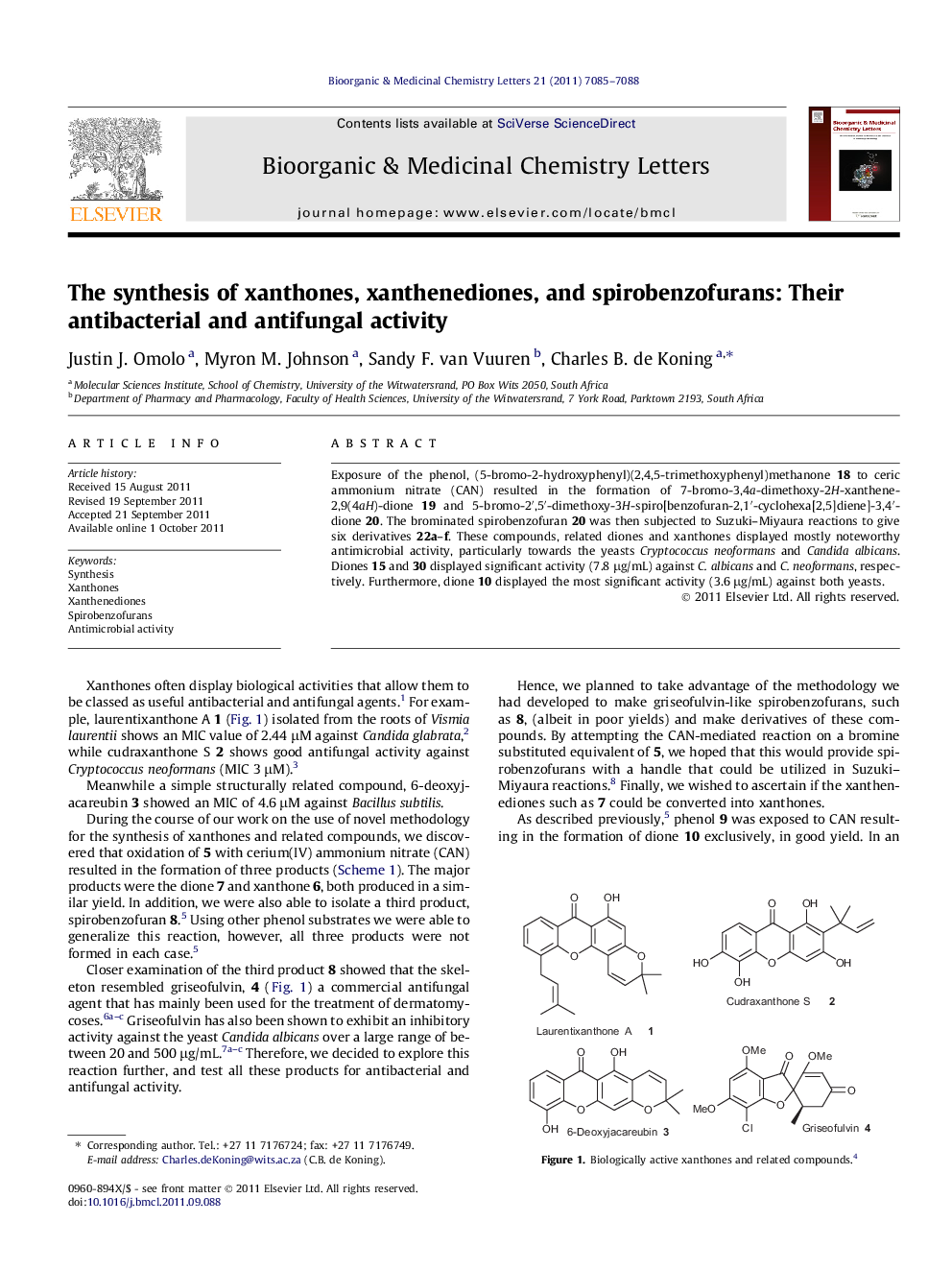| Article ID | Journal | Published Year | Pages | File Type |
|---|---|---|---|---|
| 1372159 | Bioorganic & Medicinal Chemistry Letters | 2011 | 4 Pages |
Exposure of the phenol, (5-bromo-2-hydroxyphenyl)(2,4,5-trimethoxyphenyl)methanone 18 to ceric ammonium nitrate (CAN) resulted in the formation of 7-bromo-3,4a-dimethoxy-2H-xanthene-2,9(4aH)-dione 19 and 5-bromo-2′,5′-dimethoxy-3H-spiro[benzofuran-2,1′-cyclohexa[2,5]diene]-3,4′-dione 20. The brominated spirobenzofuran 20 was then subjected to Suzuki–Miyaura reactions to give six derivatives 22a–f. These compounds, related diones and xanthones displayed mostly noteworthy antimicrobial activity, particularly towards the yeasts Cryptococcus neoformans and Candida albicans. Diones 15 and 30 displayed significant activity (7.8 μg/mL) against C. albicans and C. neoformans, respectively. Furthermore, dione 10 displayed the most significant activity (3.6 μg/mL) against both yeasts.
Graphical abstractA range of spirobenzofurans and related compounds were synthesized and tested for their antibacterial and antifungal activity. Some displayed significant activity against the yeasts Cryptococcus neoformans and Candida albicans.Figure optionsDownload full-size imageDownload as PowerPoint slide
